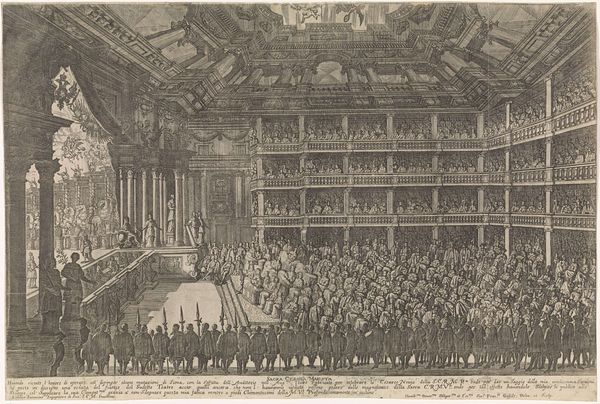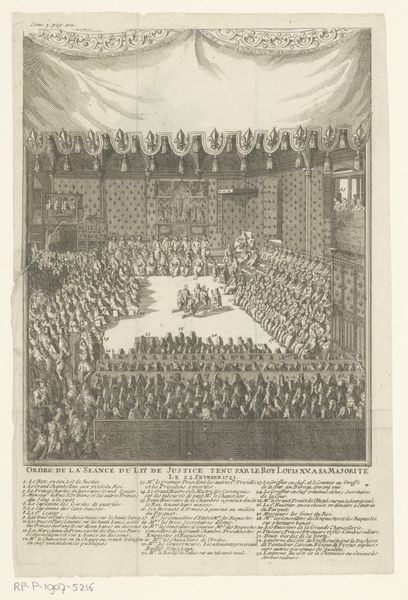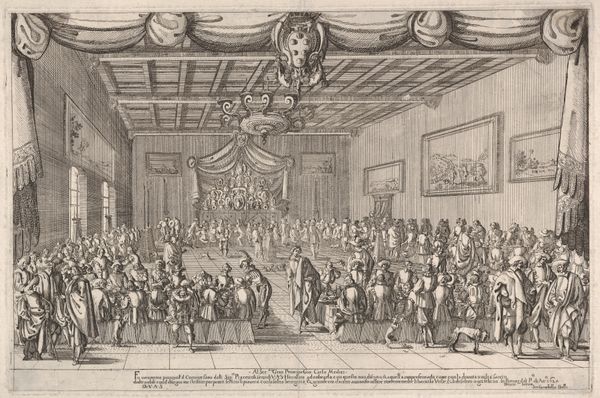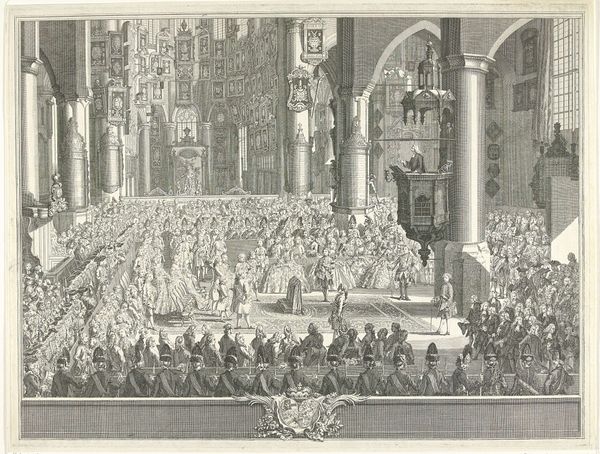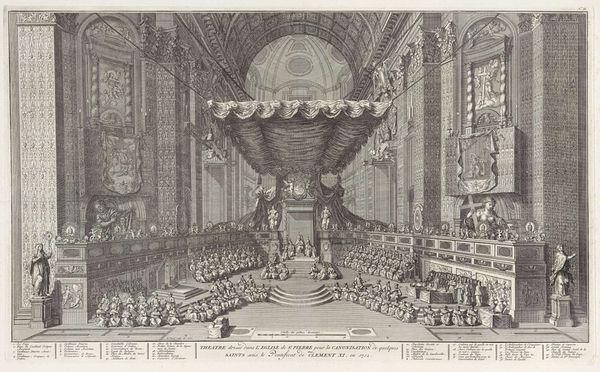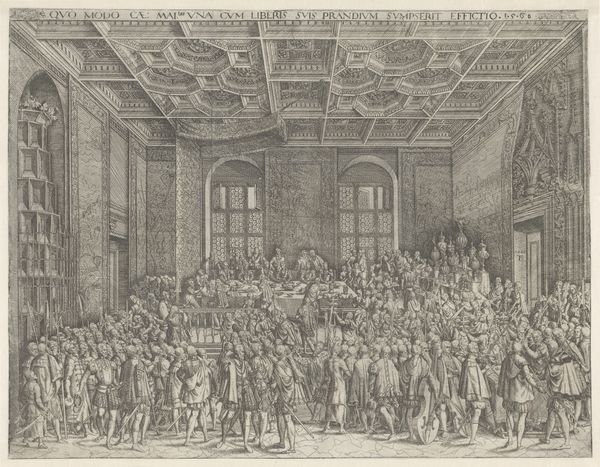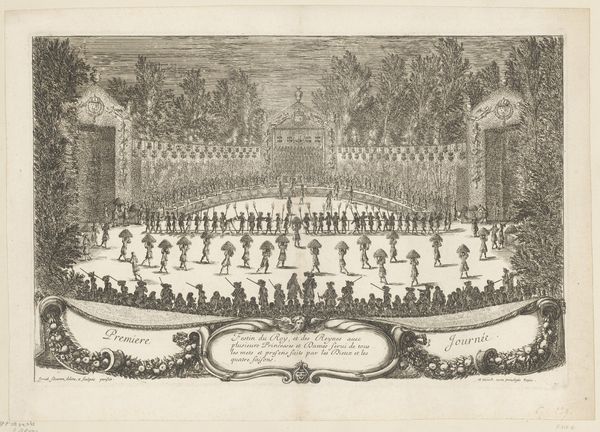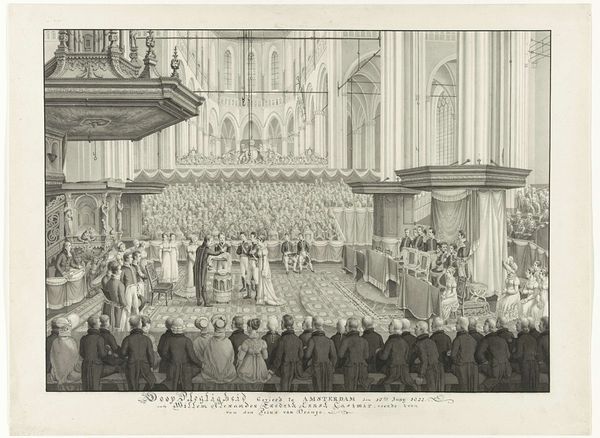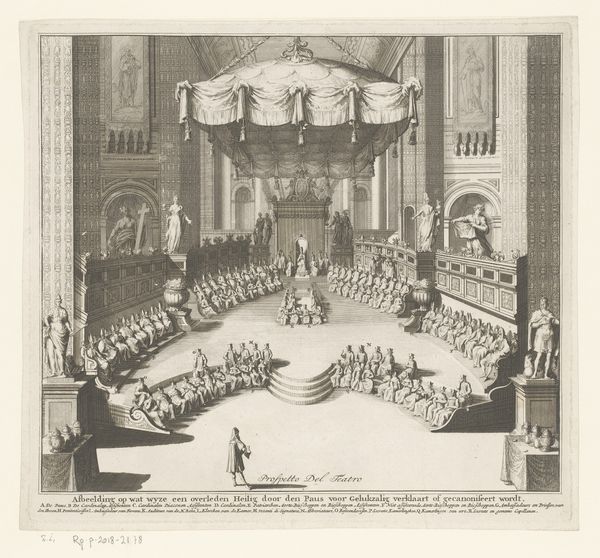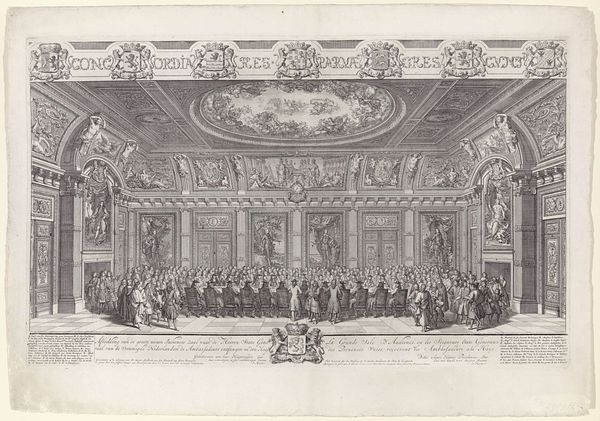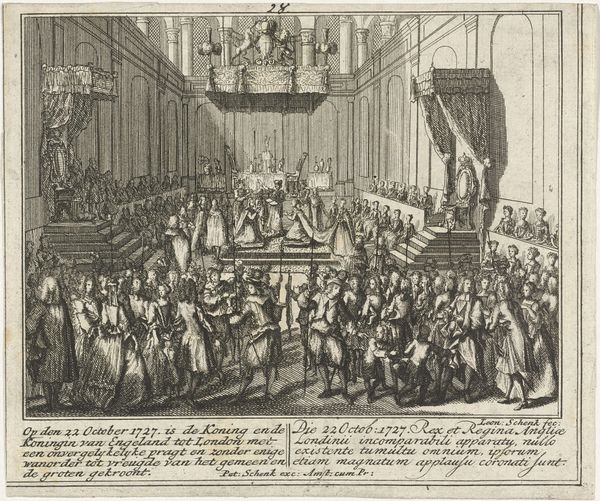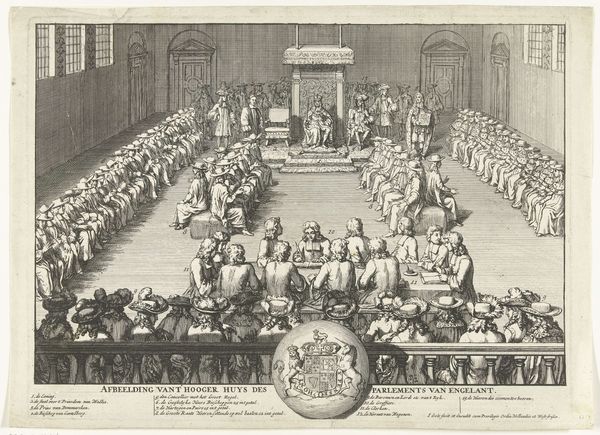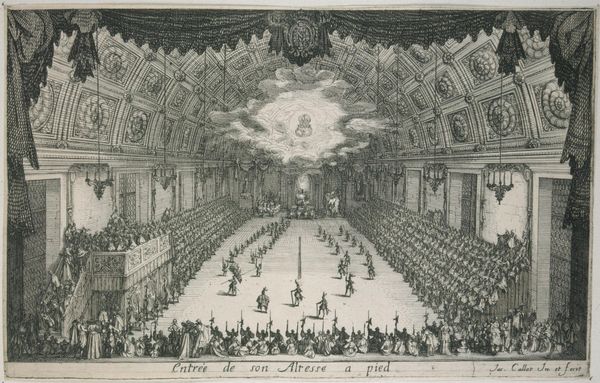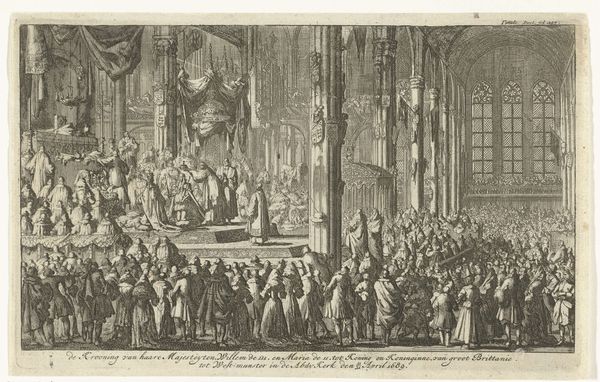
engraving
#
baroque
#
cityscape
#
history-painting
#
engraving
Dimensions: height 345 mm, width 513 mm
Copyright: Rijks Museum: Open Domain
Curator: This engraving, "Operavoorstelling voor Keizer Leopold I, 1668," thought to have been created between 1668 and 1670, gives us a glimpse into a performance held for Emperor Leopold I. The work is attributed to Frans Geffels. Editor: Wow, it's incredibly detailed, isn’t it? My first impression is that the theater itself dwarfs everything else. It's like a giant, ornate birdcage holding all these tiny people. The detail feels almost obsessive. Curator: Yes, the Baroque love of detail is very apparent. Think about the theatrical space not just as architecture, but as a representation of power and hierarchy. Look at how the tiered seating reflects a rigidly stratified society. Who is seen, and where they are placed, are politically charged acts. Editor: That's a point I never considered but of course: social infrastructure reflected in art, it's quite fascinating. But as an engraving it might come as no surprise the meticulous texture in the architecture feels at odds with the way the crowds are rendered; as faceless dots who just happened to be present, almost like wallpaper for the powerful and famous in attendance that night. Curator: That contrast you noticed really underlines how individual identity could be subsumed within these displays of state and imperial authority. Even though each face is generalized, collectively they form a key component to what made the opera house such an instrument of sovereign power. They legitimized the ruling class. Editor: It all makes me think, what’s an evening at the opera today other than our modern version of this type of performance? Do our concert halls really differ all that much today, or just offer the appearance of diversity? Curator: Well, to extend the metaphor, I suppose we should keep looking closely at who's on stage and in the audience – who's performing power, and who is consuming it. Editor: Agreed. Now that's food for thought as the lights dim and the curtain rises.
Comments
No comments
Be the first to comment and join the conversation on the ultimate creative platform.
